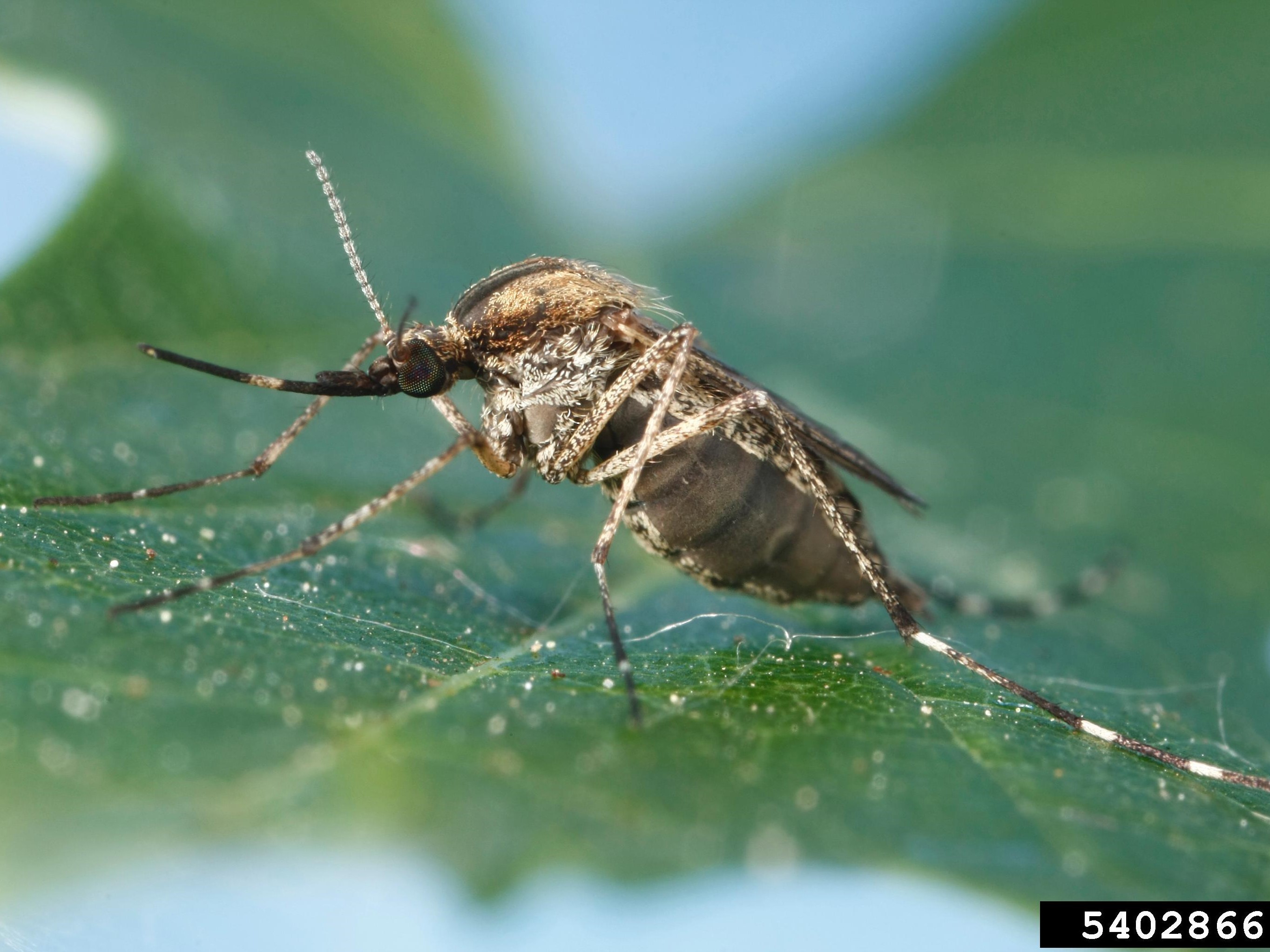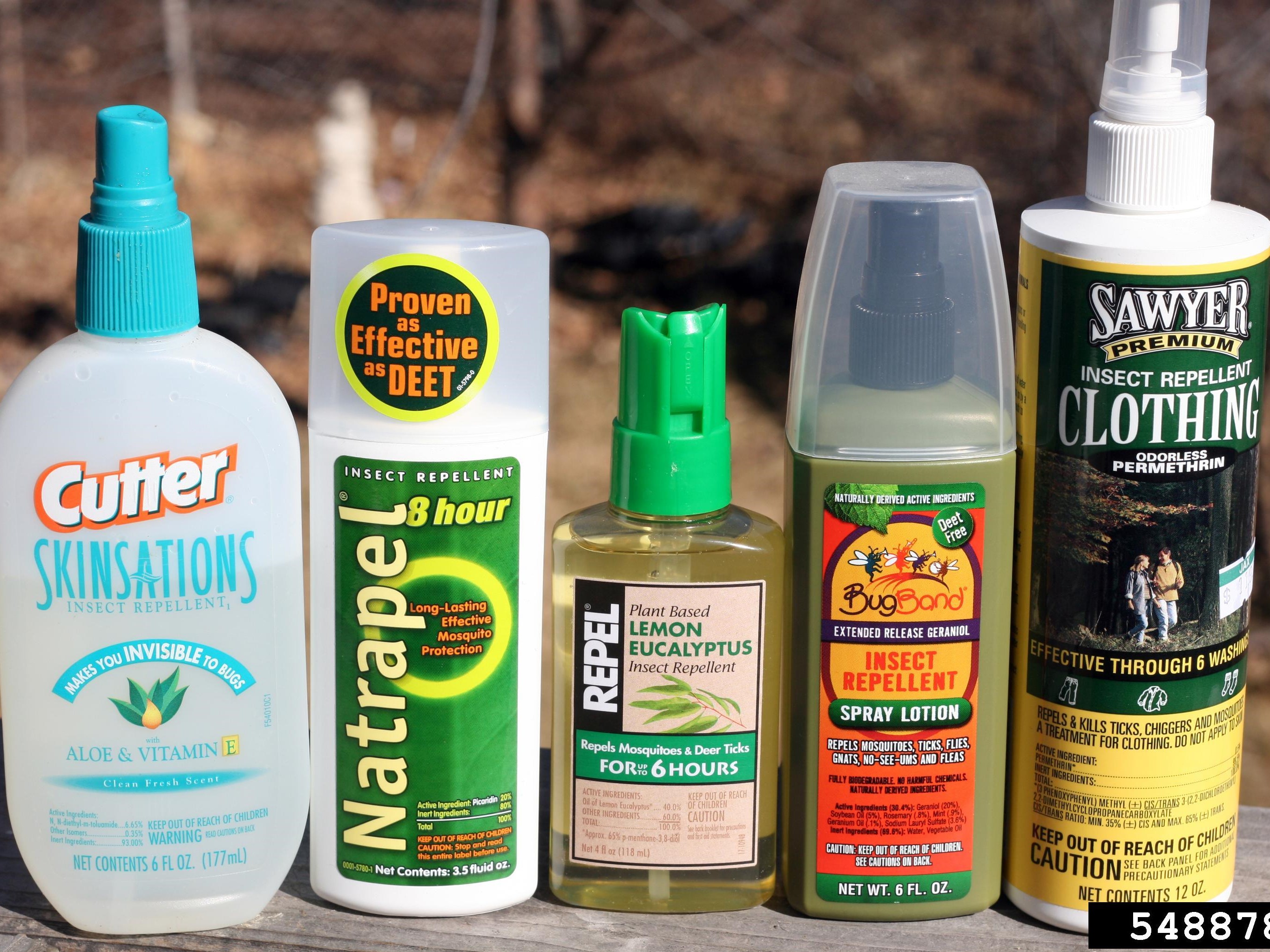 Mosquito Repellents - June 9, 2021 Jeff Schalau, Agent, Agriculture & Natural Resources University of Arizona Cooperative Extension, Yavapai County Let’s discuss mosquito repellents in the hope we experience an active monsoon season complete with precipitation in 2021. Mosquitos are common summertime residents in northern Arizona. Some species of Arizona mosquitoes are vectors of pathogens that cause western equine encephalitis, St. Louis encephalitis, and West Nile fever. However, the main goal here is not to scare you but to discuss repellents, their active ingredients, and some basic guidelines that will help you select the product best suited to your needs. When working or recreating in the outdoors, you should protect yourself from mosquitoes by wearing long sleeves and long pants. When mosquitoes are abundant, you can also consider using personal insect repellents. Aerosol and pump-spray insect repellents come in varying concentrations and are intended for skin applications as well as for treating clothing. Liquid, cream, lotion, spray, and stick products facilitate direct application to the skin. When mosquitoes are plentiful, these products can be essential. Before purchasing a personal insect repellent, check the container to ensure that the product bears an EPA-approved label and registration number. Never use a product that has not been approved for use by EPA. Read the entire label before using a repellent. Even if you have used it before, read the label again - don’t trust your memory. Outdoor foggers, candles, coils, and wearable devices are also available but should only be used outdoors. Additionally, there are products available for treating garments and fabrics to offer further layers of protection. Follow the use directions of each product carefully. Use only the amount directed, at the time and under the conditions specified, and for the purpose listed. Like other pesticides, personal insect repellants should be stored away from children in a locked cabinet. The active ingredients DEET and picaridin are considered “conventional” insect repellents. The Center for Disease Control and Prevention considers DEET and picaridin to be the most effective. Between the two active ingredients, picaridin products are less problematic when used repeatedly, over an extended period of time. Oil of lemon eucalyptus and IR3535 are considered “bio-repellents” which are derived from natural materials. Personal insect repellents containing DEET come in a range of concentrations. DEET products with concentrations of 30% may protect for up to 300 minutes while those with 4.75% DEET concentrations will protect for up to 88 minutes. Repellents having 7% Picaridin offer 150 minutes of protection time. Bio-repellents with oil of lemon eucalyptus can protect for between 94 and 120 minutes while IR3535 offers 23 minutes of protection time. Citronella and lavender oil can also be found in personal insect repellents, but are not effective for over 20 minutes. In addition, these are not recommended for children under the age of 2 years. The Environmental Protection Agency (EPA) recommends the following precautions when using personal insect repellents: apply repellents only to exposed skin and/or clothing (as directed on the product label); do not use them under clothing; never use repellents over cuts, wounds, or irritated skin; do not apply to eyes and mouth, and apply sparingly around ears; when using sprays do not spray directly onto face; spray on hands first and then apply to face; do not allow children to handle the products and do not apply to a child’s hands; when using on children, apply to your own hands and then apply it to the child; do not spray in enclosed areas. Avoid breathing a repellent spray, and do not apply it near food; use just enough repellent to cover exposed skin and/or clothing; after returning indoors, wash treated skin with soap and water or bathe. This is particularly important when repellents are used repeatedly in a day or on consecutive days; and, wash treated clothing before wearing it again. If you suspect that you or your children are reacting to a repellent, discontinue use, wash treated skin, and then call your local poison control center if symptoms persist. Arizona Poison and Drug Information Center: 1-800-222-1222. If you go to a doctor, take the repellent with you. Reactions to repellents usually take the form of burning or irritated skin where the repellent has been applied. I have included additional resources regarding mosquito repellents as well as information on mosquito identification and prevention measures below. You can follow the Backyard Gardener on Twitter – use the link on the BYG website. If you have other gardening questions, email the Master Gardener Help Desk in Prescott (prescottmg@gmail.com) or Camp Verde (verdevalleymg@gmail.com) and be sure to include your name, location, and phone number. Find past Backyard Gardener columns or provide feedback at the Backyard Gardener web site: https://cals.arizona.edu/yavapai/anr/hort/byg/. Images  Irrigated pasture mosquito (Aedes nigromaculis, Joseph Berger, Bugwood.org).
Irrigated pasture mosquito (Aedes nigromaculis, Joseph Berger, Bugwood.org). Northern house mosquito getting a blood meal (Culex pipiens, , Ary Farajollahi, Bugwood.org).
Northern house mosquito getting a blood meal (Culex pipiens, , Ary Farajollahi, Bugwood.org). Assorted mosquito repellents (Whitney Cranshaw, Colorado State University, Bugwood.org)
Assorted mosquito repellents (Whitney Cranshaw, Colorado State University, Bugwood.org)Additional Resources Mosquitoes: Biology and Integrated Mosquito Management, University of Arizona Cooperative Extension extension.arizona.edu/sites/extension.arizona.edu/files/pubs/az1706-2019.pdf Mosquito and Tick Repellents,University of Arizona Cooperative Extension extension.arizona.edu/sites/extension.arizona.edu/files/pubs/az1761-2018.pdf Mosquito Management, Colorado State University extension.colostate.edu/mosquito-management/ Find the Repellent that is Right for You, Environmental Protection Agency www.epa.gov/insect-repellents/find-repellent-right-you |